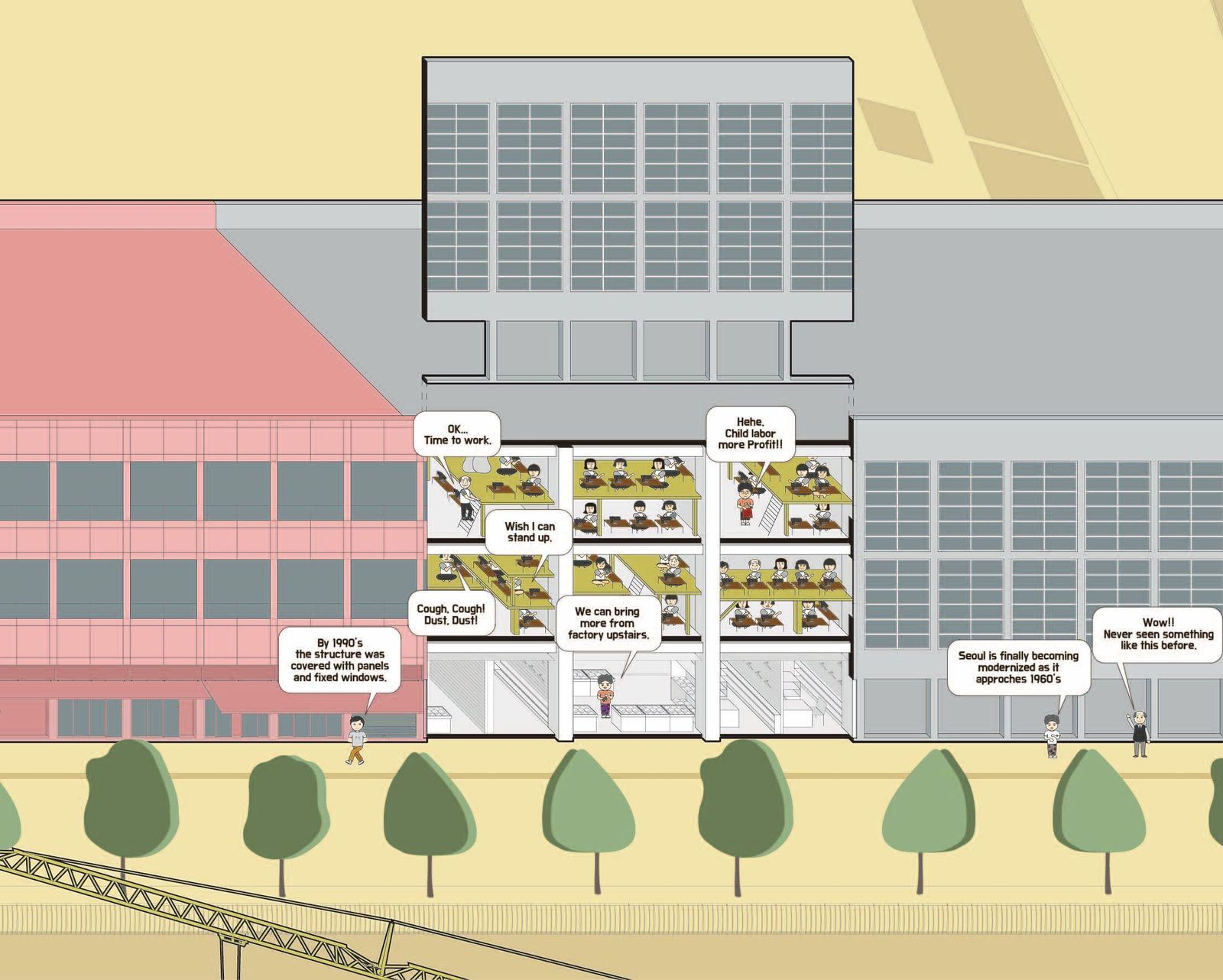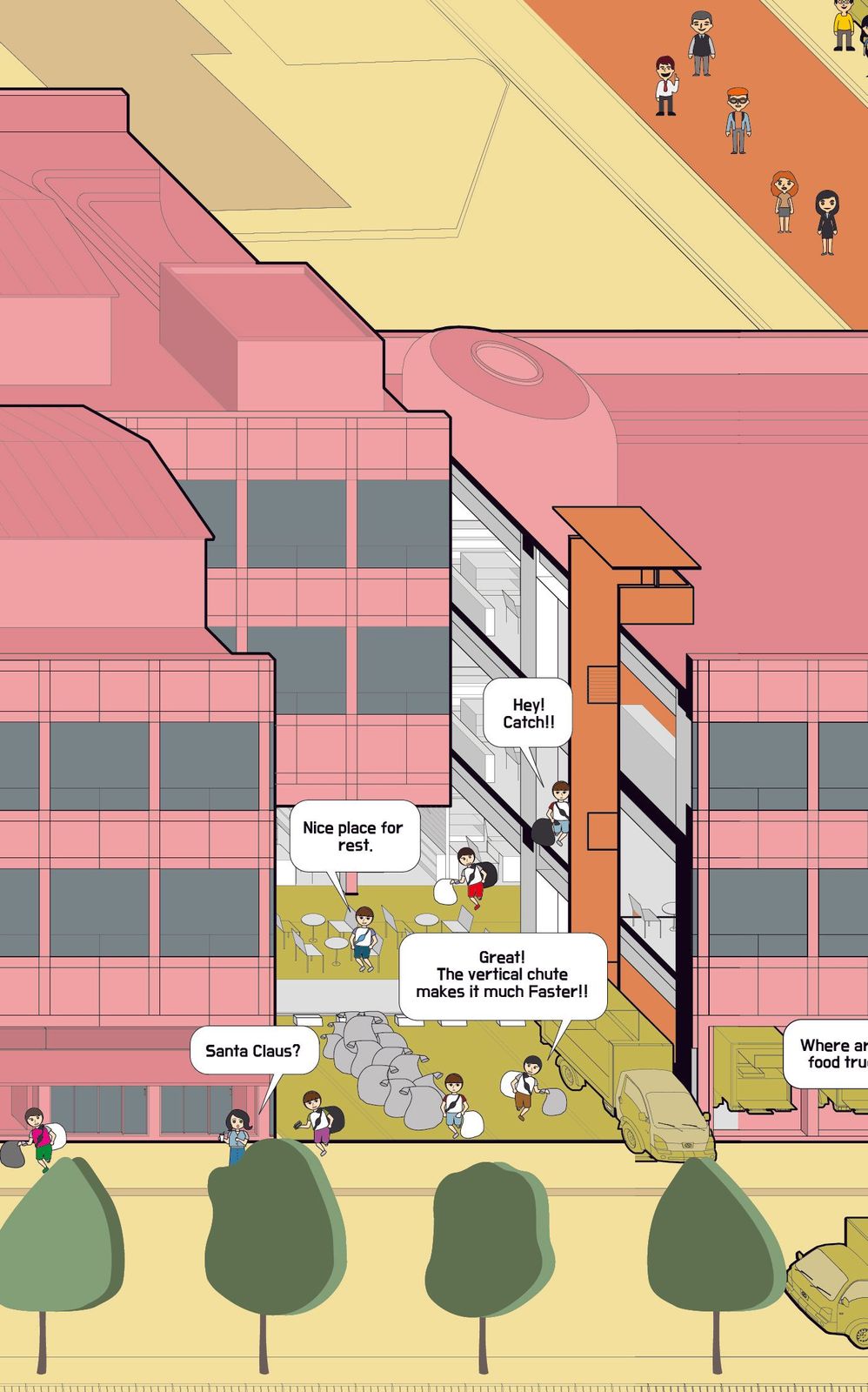

HORIZONTAL STACKING
Pyounghwa Shijang is where it all started, as being the first prototype of fashion wholesale stores in the Dongdaemun district. Although it fails to compete with the newer, larger wholesale markets, it is still considered as the symbolic and geographical center in the district. However, it has not always been a wholesale market: Until the 1980’s, Pyounghwa Shijang mainly functioned as a sweatshop factory for the garment industry. This was no period for labor rights or human rights. The main interest of the factory owners was to stuff small spaces with as many work forces as possible. The spatial solution for achieving maximum density was to install mezzanine floors. By introducing additional levels of horizontal layers not only aggravated the working conditions, but it further eliminated opportunities for vertical connections within the building.

SAIB SAMCHON
When you visit Dongdaemun fashion district after midnight, it is easy to come across men delivering cargo in plastic bags, all dressed in similar style. These young men are called Saibja or Saib samchon. They are the new breeds of delivery service only found in Dongdaemun where the corridors are narrow and vertical circulations are absent. They are the human connectors between the wholesale shops and the internet buyers. Their average action period is from midnight to 8 in the morning, where they visit 150 shops/day in average. Saib samchons are particularly welcomed in Pyounghwa Shijang where they begin to carve out new and flexible traverse circulation in a building that is notorious for its lack of circulation. In this sense, saib samchons are the ones that make up for what architecture failed to provide in the first place. If tailors in the sweatshop represented the major population of Pyounghwa Shijang back in the 70’s, it is now the saib samchons that populate the area.

VERTICAL CONNECTION AND LOADING DOCK
This proposal comes from the observation of Pyounghwa Shijang lacking the nodes for vertical connections. A vertical chute that connects the ground floor all the way to the rooftop introduces more efficiency and more economic transportation that surpasses the speed of many saib samchon’s. The chutes are mainly used for sending down the merchandises (garment) to the loading/unloading area, but it also becomes a conduit for transporting services and physical resources in a vertical manner. The loading dock space serves as the essential working platform for saib samchons which can be shared in terms of time and space, similar to the foodtrucks.
Copyright © uosarch.ac.kr., Some rights reserved.